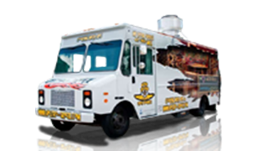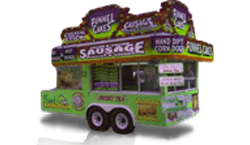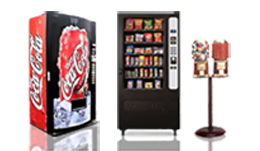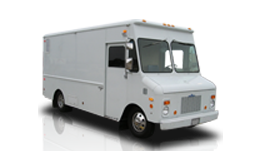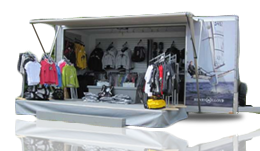Food Trucks vs Food Trailers vs Food Carts: Which to Choose?

It is not surprising that most people often think that food trucks, food trailers and food carts are all the same because of the fact that these three serve the same purpose. It would not be that bothersome, of course, however, if you are planning to put up one of these as a business, you have to take note that they are really different from one another. These differences are worth noting because they differ in set-up and operational costs, requirements, and permits.
Food truck business is actually huge and popular. In fact, it is estimated that food trucks and food trailers serve about 2.5 billion people per day. This alone gives us an idea that food trucks are indeed a profitable business when done right and will be around for good.
In order to choose the right one for you, let us take a look at each of them and identify their differences, advantages and disadvantages.
What’s Inside
Food Truck
From the word itself, a food truck is basically a truck that is equipped to cook, prepare, and serve food. It is a large motorized vehicle that can move around to sell food and beverages. One of the most popular food trucks is the ice cream truck. But there are food trucks that also sell liquor, frozen or pre-packed food, while others have built-in kitchens and serve hot meals.
Since you have all your products tucked safely inside your truck, one great advantage of a food truck is that you can easily move and sell from one place to another. If you plan to have a stop-and-go kind of business instead of remaining stationery all the time, then a food truck is for you.
Food Trailer
A food trailer is technically a mobile kitchen that you latch onto a vehicle and tow from one location to another. Food trailers come in various sizes, but there are huge ones that can cater large crowds and various types of menus. Unlike a food truck, it cannot mobilize on its own and would greatly depend on a towing vehicle to move around.
Food trailers are great alternatives to brick-and-mortar types of business. They are cheaper, more versatile, plus you can have a full kitchen and offer multi-course menu and hire a full staff to serve your customers. You can easily customize it according to your budget and preference.
Food Cart
A food cart, on the other hand, is a compact mobile kitchen. It is very small and would often just need about 1-2 food servers. These are often seen in sidewalks, malls, and in any corner. Because of its limited space, food carts are known to offer signature food items that are usually cheap and on-the-go. The most common ones that we see are hotdog stands, burger or coffee stalls.
Food carts are perfect for those who wish to start a business with very limited capital. It allows you to get a feel of a mobile food business at a very low cost. It can easily be moved from one place to another and since it’s compact it can perfectly fit even the busy sidewalks where you can reach your target market.
What are their differences?
So now that you have an overview of the three, let us dig further and identify their differences.
1. KITCHEN SIZE
The size of your kitchen is extremely important as it will tell you how many people you can cater and the variety of food you can offer on your menu.
- Food trucks may have ample kitchen space but are limited to the size and space inside the truck. It can go between 10-26 feet in size.
- Food trailers can have big kitchen spaces as much as 8-53 feet long since they are detached from a tow-vehicle.
- Food carts are the smallest among the three, they can be pulled by a vehicle or pushed and pulled manually. Usually they are about 4-7 feet long.
2. SPACE AND STORAGE
Your space and storage has an impact on the food you can bring with you and determine how much you can serve in a day.
- A food truck has quite enough space to fit a staff of 1-3. It is not that spacious and would depend so much on space-saving storage solutions and countertop cooking equipment.
- A food trailer can be big enough to run like a full-sized restaurant.
- Since a food cart is small in space and storage, only a few appliances and cooking equipment may fit. It is important to plan the menu properly so you can maximize your sales with the limited inventory that you can carry.
3. MOBILITY
Mobility helps you determine the places you can cater to.
- Since the vehicle and kitchen are all in one in a food truck, you may choose to go to any place anytime, making it easy to access your target market. You may visit fairs, carnivals, parks, and even just park on the city street.
- A trailer is dependent on vehicle towing and is usually stationary until the next time you plan to move it to another location. It is also huge so it might not fit most places. However, you may be able to cater some events, such as weddings and concerts.
- Because of its size, food carts can be placed anywhere, even on sidewalks, amusement parks, boardwalks and others. It can easily be mobilized by towing, loading it up in a truck, attaching it to a bicycle, or by simply pushing it.
4. COST
The cost of putting up this business is your primary consideration.
- The food truck is the priciest of the three, considering that you are purchasing a vehicle.
- The size and specs may add to the costs, but a food trailer is generally cheaper than food trucks.
- Food Cart is obviously the cheapest among the three.
Choosing among the three would obviously start from your budget down to the business model that suits you. It is also good to note the pros and cons that each of them offers so that you can find the perfect mobile business.


